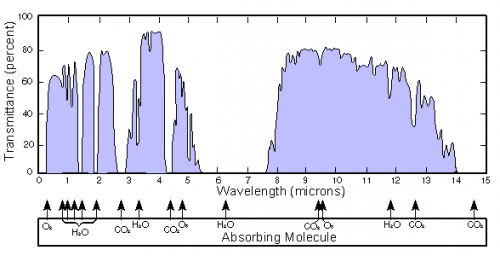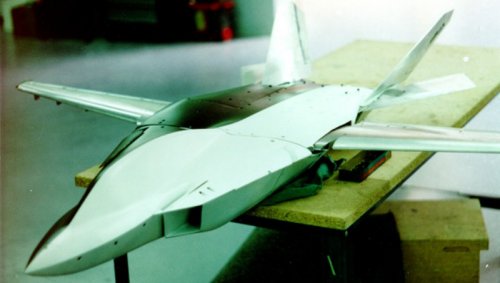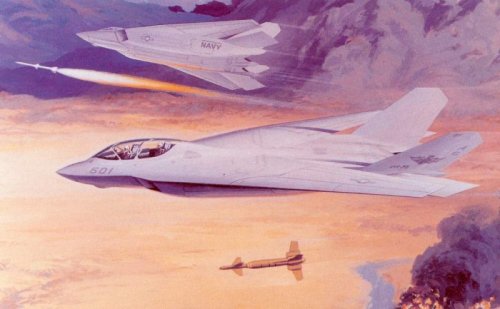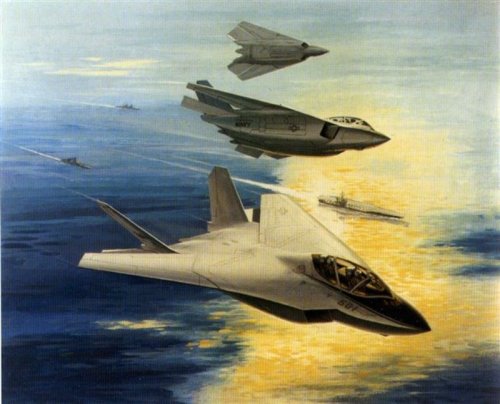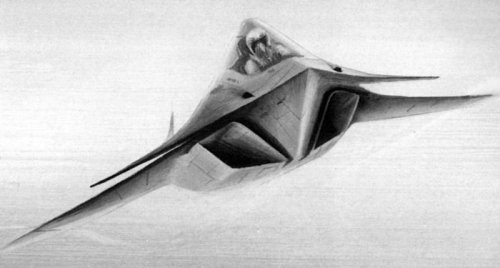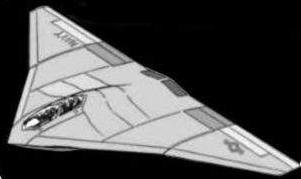Donnage99:
I think you may be taking what Abraham and I are saying a little too personally. Of course, having supercruise is better than not having supercruise, but there's more to it than that. In the notional airwing of the 1990s-200s, as seen from the late '80s, the F-14, F-18 and A-6 would be gone. In their place would be the NATF and the ATA. NATF, doing the fighter mission with a secondary attack role would probably have had supercruise if it didn't cost to much. ATA, would be replacing the A-6, which was the Navy's highest priority. It had no need for supercruise or any supersonic flight at all, since that would compromise its superstealth.
Cut to the early to mid 90s. NATF is gone, and now so is ATA, but A-6 still needs to be replaced. This is still the highest priority. Now, actually listening to the Fleet, AX comes on the scene. Stealthy, but not as much. Strike is still the driver. However, it now becomes apparent that F-14 is not going to be saved so there is now a requirement to get back some of that fighter capability. Hence, again with Fleet input, we have A/FX. This is a strike aircraft first and foremost, with a secondary fighter role. As Abraham said, Navy fighter missions are different. They no longer envision the broad fighter sweeps AF does, which is a big driver for F-22 and its supercruise. What it comes down to is performing the strike mission and having air-to-air capability that, while good enough for the Navy's needs-- escort, TARCAP, Fleet Air Defense, self defense, etc. may not be the best in the business.
Everything is tradeoffs. Supercruise is definitely valuable Personally, I feel that supercruise and being able to zoom around regularly at 60,000 feet are greater assets to Raptor than its stealth Payload/range, though, was much, much more important to A/FX. Yes, supercruise would absolutely have made A/FX even more formidable in fighter roles (it never would have been a pushover), but to have it with what the Navy needed in A/FX probably would have required too many compromises, if even possible, and certainly would have cost a lot more. Therefore, they didn't require it. I think that, more than weight was why it wasn't in any of the submissions). Navy didn't forbid supercruise after all. There's only so much money, and they weren't going to cut back on their strike needs.
Now, as to IR and IRSTs in general : Not wanting to put words on Abraham's keyboard, but maybe he was saying that a lower thrust engine using afterburner may not emit more IR as a higher thrust engine at max military power. While the F-22 uses some techniques to cool its exhausts, its clear that that portion of stealth was not as important to them as IR was to Northrop on the YF-23. The latter in addition to cooling the exhaust, also buried the engines and used special materials behind the exhausts. Neither of those options are available to the Raptor because of where the exhausts are located and the fact that the F-22 uses vectored thrust. In addition, the design of the aft fuselage and empennage is designed to mask "views" of the engine. Take a look at photos and videos of the F-22 and the YF-23. On the former you can see the burner plume from all over, even from the front. On the latter, have you ever seen a picture or move of the YF-23 except from a narrow cone at the rear where you could see the flame? Lockheed read the AF right, they weren't as concerned with IR stealth. The Navy, however, was.
They knew that modern IRSTs would be able to see and track supercruising aircraft from what they radiated zooming through the air. The first meaningful attempt to address that would have been with the "smart skin" originally considered for JSF (I think that initiative died). Of course an afterburner plume you can see emits more IR than the skin, but at supersonic speeds the skin still emits enough to be tracked, albeit at reduced ranges relative to 'burner, even if you can't look at the engine exhaust. That'd be true even if you had impulse drive and emit no IR from the engines. In the next decades stealth breakthroughs may meant that's no longer true, but they were spec'ing the plane in the early-mid 1990s.

